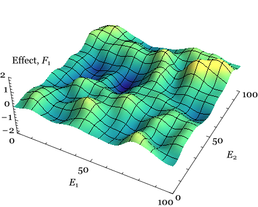Tipping points in Complex Coupled Life-Environment Systems
- Investigators
- Iain Weaver, James Dyke
Simple models of complex phenomena provide powerful insights and suggest low-level mechanistic descriptions. The Earth system arises from the interaction of subsystems with multi-scale temporal and spatial variability; from the microbial to continental scales, operating over the course of days to geological time. System-level homeostasis has been demonstrated in a number of conceptual, artificial life, models which share the advantage of a thorough and transparent analysis. We reintroduce a general model for a coupled life-environment model, concentrating on a minimal set of assumptions, and explore the consequences of interaction between simple life elements and their shared, multidimensional environment. In particular stability, criticality and transitions are of great relevance to understanding the history, and future of the Earth system. The model is shown to share salient features with other abstract systems such as Ashby's Homeostat and Watson and Lovelock's Daisyworld. Our generic description is free to explore high-dimensional, complex environments, and in doing so we show that even a small increase in the environmental complexity gives rise to very complex attractor landscapes which require a much richer conception of critical transitions and hysteresis.
Iain S. Weaver and James G. Dyke, 2013, Tipping points in Complex Coupled Life-Environment Systems, Proceedings of ECAL 2013, pp387-394
Categories
Life sciences simulation: Ecology
Programming languages and libraries: C, Mathematica, Matlab
